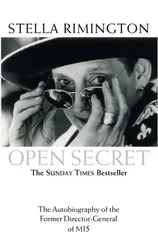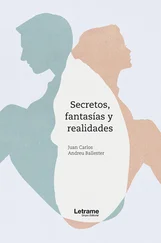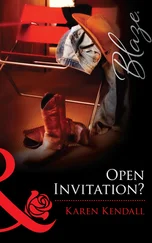There are four paved roads that lead you out of Malihuel. After the concrete arch announcing your departure, Veinticinco de Mayo Street forks in two — eastbound it leads to Rosas Paz and Alcorta to join up with the Buenos Aires-Rosario expressway; southbound it breaks into a tight chicane that connects the triplet towns of Leopardi, Dupuy and Bullock before meeting the section of Route Eight that leads to Pergamino and Buenos Aires. Northbound is the road to Fuguet, which at the time of the great floods kept what was left of Malihuel in contact with the outside world, and westbound along Veinticinco de Mayo Street leads to the cemetery and the lagoon road, which, after skirting the new beach resorts (Benoit’s and the Yacht Club’s) and passing through Elordi, meets Route Eight on the section heading to Toro Mocho and Río Cuarto. An officially closed short cut skirting the lagoon allows truck-drivers to dodge the toll road between Bullock and Toro Mocho; facing each other on either side of the short cut are the Mochica Motel and the tyre-repair shop, which everyone in town knows simply as the “road whores’ place”. Strewn along the length of this byway — which has more potholes than tarmac — are the relics of Malihuel’s golden age: the beginning of the causeway that once led to the island beach resort, the ruins of the hotel rising out of the water like a fortress, the posts of the street lights for the plots that never were, the entangled skeletons of rusting farm machinery and decaying stands that still await the opening of Expotencia ’73. As in all small pampas towns there is so much space available that the new never has to replace the old; it is added on. So from the nineteenth-century watchtower to the yellow hulk of the old power plant, which fell into disuse when the high-voltage power lines arrived just over a decade ago, everything that has ever existed in Malihuel endures, as it does in the minds of the townsfolk, who make the stubborn exercise of memory part of their everyday sport. Malihuel is a permanent museum of itself, and its history — which barely features in the official records — persists, writ large on the surface of the earth in its obstinate calligraphy of twisted iron and concrete.
IN WINTER, the tearoom of the Malihuel Yacht Club is a cold, depressing place, with barely a few white Formica tables streaked with grey, surrounded by black tube chairs upholstered in red plastic, huddled in the centre of the room. The high, livid walls display an ancient calendar, courtesy of Ferro & Brancaloni Butcher’s of Veinticinco de Mayo and López, the snow of which has been yellowed by the years; a sepia photograph tinted with essential colours (green for the treetops, blue for the water, yellow for the buildings, red for the roofs), showing the island’s beach resort in its glory days, a black-on-dayglo poster announcing the participation of Las Karakaras (“All the Way from Córdoba!”), La Sonora Malihuense and Diógenes “El Lagunero” Aulicino at last carnival’s dances. Don Eugenio Casarico, the Yacht Club president back then, today merely the owner of the franchise for the tearoom, tells me of the carnivals of twenty years ago. “Those carnivals at the lagoon,” he reminisces, “tourists’d come from all over the province and from neighbouring provinces, like the beaches of Mar del Plata the lagoon’s were, you should’ve seen it at night,” he tells me, and once again I don’t remind him I did. “Your grandfather was always a friend of the Club, as well as a life member and, going through some old papers a few days ago I found his membership card of all things in a drawer, which we’d never got around to giving him; the previous mayor on the other hand had declared war on us, he and his Council said the Club was a bastion of unfair anachronistic privilege that deepened the social injustices at the heart of our community, I mean it’s not as if it’s the Jockey Club or anything, you can see for yourself how modest our facilities are, even the milkman was a member, and that lad Ezcurra in his leaders calling for the people to ‘tear down the wire!’ and ‘get their feet wet on the wild side’, the shower of arriviste brats, as if the Club hadn’t been founded by their fathers and they hadn’t been members since birth, sheer demagoguery like everything in those days, the ‘Montonero Council’ they called it, all that ‘for the people what is the people’s’ palaver but, as far as I know, they were never seen rubbing shoulders with the spades down at the public beach resort, which was bare as a bone scorched by the sun, and only the stunted willows for shade, the Council had to replant them come the start of every season because none ever made it to the end of the season. That’s what we had the wire fencing put up for, the lagoon’s ours and we wanted a bit of peace and quiet to enjoy it. Don’t think that’s why I bore him a grudge, I’ve always ridden any wrongs with my head held high, which is why when Superintendent Neri came to see me I put all grudges and personal interests aside and begged him, pleaded with him to reconsider his decision — already final mind — which he’d only made public to scratch a consensual itch. I even offered to talk to Rosas Paz myself, whom I sympathised with from a certain point of view, to smooth things over, at least enough to dissuade him from a course of action he might come to regret, but the Superintendent objected — if Don Manuel gets wind of it it could make things worse, his military friends may take measures that wouldn’t benefit either side. Far be it from me, Superintendent sir,” says Don Eugenio he said in that conversation with no witnesses, the highlights of which he now offers up to my good faith, “far be it from me to dictate to you how to go about your duties, but wouldn’t it be enough to give the boy a fright, something to make him see the error of his ways? Especially seeing as he’s calmed down since the new authorities took over, well, anyway, perhaps just a warning … A fright Casarico? What did you have in mind?” Don Eugenio tells me Superintendent Neri replied a little snidely. “Shall I send Officer Rama over in a sheet to sneak up on him and go boo? We’re not curing his hiccups Casarico, we’re trying to find a solution to a problem, a permanent solution. What I want to know exactly is whether I have your backing or not”—and Don Eugenio goes quiet after repeating the words from twenty years ago and runs a trembling hand over his leathery pate, his vaguely bulging eyes reliving either the humiliation or the fear, I can’t tell which. Feeling awkward I get up from the table to study a wall covered in framed photographs, most of them so old it’s difficult to tell from their general sepia uniformity which ones were once black-and-white and which colour. One in particular draws my attention — it shows one of the tables in the bar, around which four men are playing a hand of truco, apparent from the distribution of the cards and the white beans and the victorious smile worn by my grandfather in the foreground as he shows the seven of coins he’s about to win the hand with for himself and his partner. Their opponents, also half standing, hold up their cards to the camera, shielding them from the other players. They aren’t hard to recognise: a Don León with undyed hair, my present company and my grandfather’s partner, the only one who isn’t showing his cards — his broad, seated figure stares out at me with eyes of unfathomable pitch.
“I don’t know this fellow,” I remark, pointing. Don Eugenio comes over to the wall and screws up his eyes, first at the image in question, then, even more perplexed, at my face.
“I don’t understand,” he says.
“This one,” I repeat. “My grandfather’s partner. Who is it?”
Читать дальше












